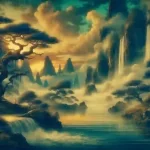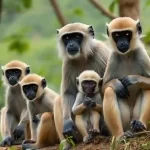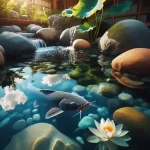Historically speaking , modern Assamese literature began towards the later part of the 19th century with the advent of English education when the Assamese mind came into contact with English literature and Western humanist ideas. In this context one recalls an apparently small but vastly significant incident- that of establishing an organization called Asamiya Bhasar Unnati Sadhini Sabha in Calcutta on 25 August, 1888, by a batch of Assamese students and their subsequent publication of a literary magazine, Jonaki. Inspired by Western literary achievements and the  contemporary resurgence in Bengali literature, this devoted band of Assamese students, particularly Laksminath Bezbaroa, Chandra Kumar Agarwala and Hemchandra Goswami, the precursors of the romantic upsurge in Assamese literature, devoted themselves, with newly-awakened patriotic zeal, to the tasks of raising the Assamese language to the level of other developed languages of the world, restoring and editing of old Assamese literary works and of working for the all-round development of the land of their birth. Thus began a new chapter in the history of Assamese literature-the second Golden Age of Assamese literature, the first being the Age of the Neo-Vaishnavite Movement.
contemporary resurgence in Bengali literature, this devoted band of Assamese students, particularly Laksminath Bezbaroa, Chandra Kumar Agarwala and Hemchandra Goswami, the precursors of the romantic upsurge in Assamese literature, devoted themselves, with newly-awakened patriotic zeal, to the tasks of raising the Assamese language to the level of other developed languages of the world, restoring and editing of old Assamese literary works and of working for the all-round development of the land of their birth. Thus began a new chapter in the history of Assamese literature-the second Golden Age of Assamese literature, the first being the Age of the Neo-Vaishnavite Movement.
The over-all effect of this West-inspired literary movement was almost a complete break with the religious aims and ideals of medieval Neo-Vaishnavite literature and the introduction of the pursuit of the humanistic and romantic ideal of beauty, of glorifying the common and the ordinary aspects in human life and nature, of revival of old Assamese ballads and history in romantic light, and the search for new forms of expression. It was as if a new source of vitality, energy and freshness had been tapped leading to the release of the self, the creative imagination that coloured everything it touched. Suddenly, tinged by ‘the light that never was on land or sea’, the old, familiar earth and its earthy humanity, the singing birds, the flowering plants, the traditional ballad characters like Tejimala and Ratani, even the history of the dead past acquired a strange beauty. Personal emotions became predominant and the lyric became the dominant form of poetic expression. Other forms also came in-the sonnet, the literary ballad, the short story, the novel, the historical drama, and also literary criticism and the personal essay. Language itself became free from the conventional bondage and approached the idioms and words of day-to-day conversation.
The romantic wave began towards the end of the 19th century and continued to expand till the beginning of the forties. In poetry, Chandra Kumar Agarwalla proved to be not only the precursor of the deepest aspirations of Assamese romantic poetry- its love of beauty, of life in nature, its sense of sadness at the transience of beauty and at the sufferings of human life, its glorification of human life, its patriotic fervour ; but he also proved to be the creator of some of the finest and deepest specimens of Assamese lyrics. His friend, Lakshminath Bezbaroa, was less of a poetic artist but his was the most dominating and influential personality during the entire period of Assamese romantic literature. Another contemporary poet, Hemchandra Goswami is particularly notable for introducing the sonnet form in Assamese poetry.
The first three decades of the twentieth century saw the flourishing of the literary ideals upheld by the poets of the age, among whom we may count, besides the three pioneers just named, such elderly poets as Kamala Kanta Bhattacharyya, celebrated for his fiery patriotic zeal, Bholanath Das, known for his first use of blank verse in Assamese poetry, and Bolinarayan Bora, the pioneer of Assamese satirical poems. The other poets who were associated with the ‘Jonaki’ age were Mafizuddin Ahmed Hazarika, Padmanath Gohainbaruah, Benudhar Rajkhowa and Anandachandra Agarwla.
The first three decades of the current century was a period of exceptional fruitfulness for the romantic era. With increased confidence, and urged by a pervasive desire to raise the level of Assamese language and culture, and also moved by greater nationalistic awareness, the Assamese middle class proved their capabilities and excellence of performance in almost all branches of art and culture. This was the period of poet Raghunath Choudhary, a poet in whom the romantic love of nature reached its acme and became ‘a passion-oriented religion’ and also found its most perfect utterance; of Ambikagiri Roychowdhury, in whom the ideals of love and patriotism found the most remarkable lyrical and vigorous expression, and also of Jyotiprasad Agarwala whose poetic vision transformed the best traditions of Assamese culture into modern artistic creations, particularly in lyrics and dramas. There were also a host of other poets and writers, Durgeswar Sarma, Jatindranath Duara, Sailadhar Rajkhowa, Surya kumar Bhuyan, Ratna Kanta Barkakati, Bhagavati Prasad Barua, Prasannalal Choudhury, Parvati Prasad Barua and the poetesses, Nalinibala Devi and Jamuneswari Khataniyar.
The forties of the present century marked the turning point in the annals of modern Assamese literature. There were visible changes in the attitudes and modes of writers and poets and the re-published ‘Progressive’ journal, Jayanti, became the vehicle of these changes. These changes were in part a reaction to the sentimental, too personal, loosely effusive writings of later romantic poets like Jatindranath Duara (even Devkanta Borooah, who has been reckoned as one of the best love poets in Assamese and earned popularity for his impressive use of the dramatic monologues, was not spared) and were also due to the socio-economic crisis following the Second World War, the scars left by the 42 Movement, the direct or indirect influence of Marxian socialistic thinking, Freudian psycho-analysis, and, finally, the disillusionments following the attainment of Independence. The publication of the Jayanti was followed by that of the Pachowa and the Ramdhenu, and by that time, the modern Assamese mind had been exposed to literary trends from almost all over the world. We have now come upon the period of 20th century modernity.
The changed climate led to a quest for new subjects and ideas as well as for new forms of expression in every branch of literature. As one examines the new, post-war trends, one notices two divergent directions. The ‘Jayanti’ group of writers and poets like Bhabananda Dutta, Amulya Barua set forth an anti-romantic, realistic trend with Marxian under-tones and, though they produced very few successful creative works, their ideal continue to attract followers till to-day. The other trend avoided overt political commitments and chose the path of non-committal pursuit of art.
Emdad Ullah: From Assam has been translating many Assamese poets into English. He is a Lecturer in English, Arya Vidyapith College, Guwahati, an Asstt. Editor for Assam Express. His works include Sirjan Aru Manon, Kabitar Sabishes, Loo Gubbbare (short stories translated from Hindi); The Rhythms of Broken Dreams (poetry, translation from Assamese to English)





Leave a Reply